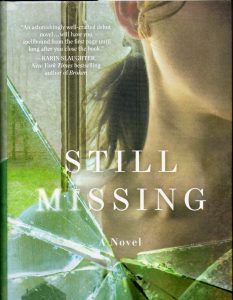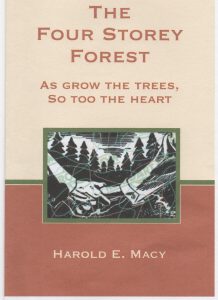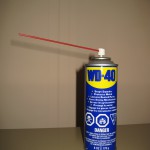Sometimes it seems like everyone I talk to wants to write a book. I’ve lost count of the number of people who’ve told me they have a great idea; all they need is the time, motivation, a new laptop or some other little thing that will allow them to create the next bestselling novel or the definitive world history.
And, you know, some of the ideas I hear would make good books. So why haven’t they been written? Motivation is a primary reason, I’m sure. It’s hard to get up an hour early or to skip your favourite TV program to work on a manuscript. But some people do it. What gives them the will to park themselves in front of their keyboard and write instead of just talking or dreaming about it?
 For most folks there’s a defining moment when they decide to go for it and do their best to become a published author. A couple of years ago Chevy Stevens (the pen name of Rene Unischewski) was working as a real estate agent in Nanaimo. But she wanted to write a book.
For most folks there’s a defining moment when they decide to go for it and do their best to become a published author. A couple of years ago Chevy Stevens (the pen name of Rene Unischewski) was working as a real estate agent in Nanaimo. But she wanted to write a book.
“I figured if I was going to do it, now would be the time,” she said in an interview with the Nanaimo Daily News. “It’s a lot harder years later, especially if you’re married and have children.”
So Chevy quit her job, sold her house and lived off her savings for two years. When she’d written the best novel she could, she hired a professional editor to help her make it even better.
Stevens was willing to take some big risks but they resulted in an agent, a contract and a book that made the New York Times Bestseller List and is currently optioned for a movie.
 For Comox Valley resident, Harold Macy, it was different. He’s written scores of short stories and won numerous awards for them. But he wanted to write a book.
For Comox Valley resident, Harold Macy, it was different. He’s written scores of short stories and won numerous awards for them. But he wanted to write a book.
About six years ago he began a fiction/nonfiction hybrid based on his experiences as a forester. He’d write and rewrite and, on occasion, take his manuscript to workshops to get feedback and hone his craft.
Eventually Harold knew his manuscript was as ready as it would ever be. He also knew he’d be 65 soon and wanted his book published sooner rather than later. So he investigated his options and decided to self-publish. The Four Storey Forest, which includes a dust jacket blurb from award-winning author Jack Hodgins, is scheduled for release this May.
I met Harold 25 years ago at a writing retreat at Strathcona Park Lodge. That was my watershed moment. I’d had a few articles published but, like everyone else, I wanted to write a book.
Getting away from the obligations and distractions of daily life and spending time with like-minded people opened my mind to the possibilities of what I could do — if I was prepared to work at it. And receiving feedback from published author, Bill Valgardson, was invaluable.
What did you do – or what will it take for you — to make your book dream a reality?



